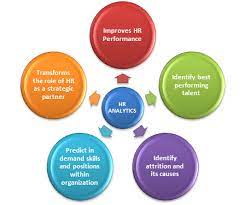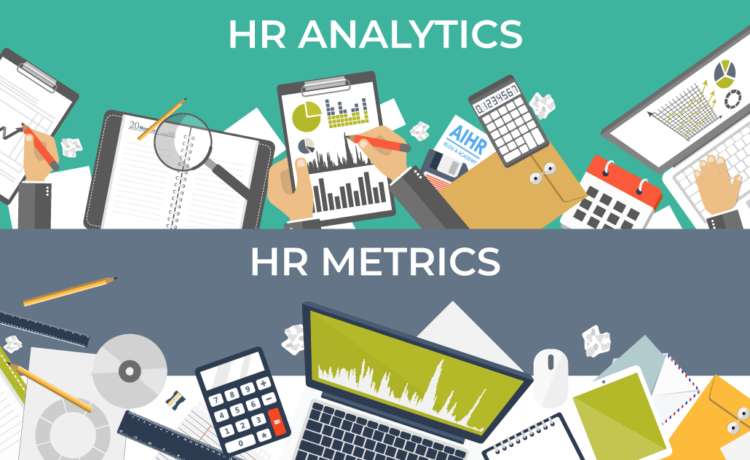HR Analytics, People Analytics and Workforce Analytics are all same terms interchangeably used. HR Analytics is about using data to make better business decisions; it is a data-driven approach geared towards managing people at the workplace.
Many HR professionals have variously defined it and they have been unanimous in their definitions. It is “the systematic identification and quantification of people drivers of business outcomes”. “HR Analytics is a data-driven approach towards HR Management“. “it is the quantification of people drivers on business outcomes”. It measures why something is happening and its impact.

Again, Workforce Analytics is about analyzing people data to answer critical questions about people in your organization. For instance, What is your annual employee turnover? Or What percentage of your employees are likely to resign their appointments from your Company in the next six months? These questions can only be answered using data.
HR Analytics starts with an opinion and data helps to confirm the opinion. Thereafter, we compare the data and make valid judgments. This is where metrics come in.
HR Metrics are measurements used to determine the effectiveness and efficiency of HR policies – they compare different data points. For instance, if last year’s labour cost was 10% and it is now 15%, it then means that it has increased by 50%. Metrics measure the difference between numbers and compare different data – they don’t show you the cause. Measures or metrics without analysis has no true value.
It is a fact that HR Departments are very good at collecting data (for example the Performance Appraisal) but how much of these data are put into use?! A lot of them remain unused. As soon as organisations start analysing these collected data, they are involved in HR Analytics.
HR Analytics assists HR professionals in making data-driven decisions to attract, maintain, develop and motivate the workforce and improve ROI; enables managers make better business decisions, create conducive and better work-environment and maximize employees’ productivity.
What I have learnt as a Consultant over the years is that applying HR Analytics changes how Companies do business and add values to the business. it helps organisations identify different levels that they can turn better decisions. In effect, when HR Analytics is well utilized, it creates positive impact on the bottomline.
Truly, Talent Analytics is connotative and more often used in the academic environment, while workforce analytics is more used by software providers whilst assisting in workforce planning. People Analytics and HR Analytics simply refer to the statistical analysis of people data. Of these, HR Analytics is more globally used and popular according to RS Research and ranks highest in Google search while People Analytics ranks second. Although, People Analytics is increasingly becoming popular because HR Analytics is becoming overused and everything referred to HR data is now being referred to as HR Analytics!
Again, the term HR analytics is very narrow because it only refers to Human Resources. Ideally, analytics go beyond HR as it includes financials, and other data. Infact, HR department sometimes don’t have the skill-set requisite to carry out data analysis hence it requires professionals with experiences in IT, Finance and other related data analytical areas.
Whether you are looking at performance, calculating productivity trends, employees’ turnover, reviewing ROI or engaged in long-term workforce planning, you are involved in studying and analyzing people. HR Departments have focused on people-related matters that transcends Human Resources for decades.
Without mincing words, the responsibility of managing people in the workplace has always been a shared responsibility between the business and HR. An attempt to distinguish between HR Analytics and People Analytics appears to be a bit difficult because it is a matter of semantics. Rather, we should focus on the value that analytics bring or adds to the overall business performances by improving the overall decision-making process.

Benefits:
- It changes the way people are managed in a significant way as you no longer rely on emotions, gossips etc in decision-making;
- Helps HR professionals in making informed data-driven decisions and also tests the effectiveness (HR output) and efficiency (input) of HR policies and interventions;
- Engenders better compensation, incentive and drives employee performance
- Minimises the incidence of making decisions based on intuition
- Promotes better employee development and improves engagement
- Identifies causes and its impact on the business;
- Tracks the effectiveness of HR metrics on HR business outcomes;
- Provides answers to very salient questions;
- Enables better workforce planning
- Points out the effects of metrics on business performance
- Helps create a business case for HR interventions, moving from operational partner to strategic partner;
HR departments these days simply focus more on reporting employee data but this approach is outdated in today’s data driven economy. Mere keeping records is not sufficient to add strategic value. The data should be turned into information and the information into insight. Turning data into insights enables HR to be more involved in decision making at a more strategic level and adds value to the organization, enhancing its efficiency and effectiveness.
I must state at this juncture that any monies spent on general business analytics delivers multiple values in return.
Contributed by Agolo Uzorka, CEO/ Lead Consultant, Eugene + George Consulting Limited













